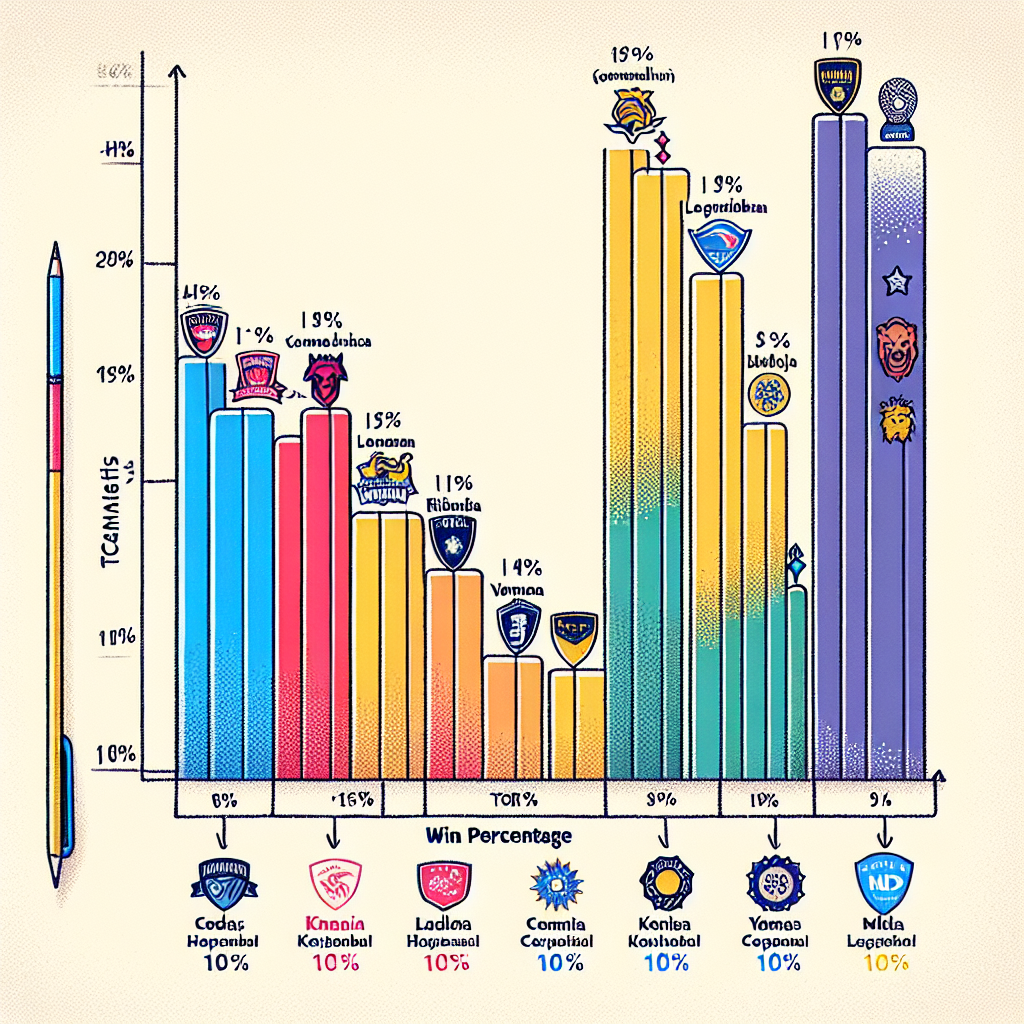Ipl win percentage

The Role of Player Performance in Boosting IPL Win Percentage

In the high-stakes world of the Indian Premier League (IPL), where franchises invest heavily in assembling star-studded teams, the win percentage becomes a crucial metric for evaluating success. While several factors contribute to a team's performance, player performance stands out as a pivotal element in boosting a team's win percentage. Understanding the intricate relationship between individual contributions and team success can provide valuable insights into the dynamics of the IPL.To begin with, the role of batsmen in enhancing a team's win percentage cannot be overstated. Consistent and high-scoring batsmen lay the foundation for a strong innings, often setting or chasing formidable targets. Players like Virat Kohli and Rohit Sharma have demonstrated how individual brilliance can turn the tide in favor of their teams. Their ability to anchor innings, coupled with explosive hitting, often results in match-winning performances. Moreover, the presence of reliable finishers, such as MS Dhoni, who can handle pressure situations with composure, further elevates a team's chances of securing victory.Transitioning from batting to bowling, the impact of bowlers on a team's win percentage is equally significant. Bowlers who can consistently take wickets and maintain a tight economy rate are invaluable assets. The likes of Jasprit Bumrah and Rashid Khan have shown how effective bowling can dismantle even the most formidable batting line-ups. Their skill in executing yorkers, slower balls, and other variations under pressure situations often tilts the balance in favor of their teams. Furthermore, bowlers who can perform in the death overs, where matches are often decided, play a crucial role in determining the outcome of games.In addition to individual performances, the synergy between players also plays a vital role in enhancing a team's win percentage. The ability of players to work together, understanding each other's strengths and weaknesses, often results in cohesive team performances. For instance, effective partnerships between batsmen can stabilize innings and build momentum, while coordinated efforts among bowlers can apply sustained pressure on the opposition. This synergy is often a result of strategic planning and effective communication, both on and off the field.Moreover, the role of all-rounders in the IPL cannot be overlooked. Players who can contribute with both bat and ball provide teams with much-needed flexibility and balance. All-rounders like Hardik Pandya and Ben Stokes have the ability to change the course of a match with their dual skills, making them indispensable to their teams. Their versatility allows teams to adapt to different match situations, thereby increasing their chances of winning.While individual brilliance and teamwork are critical, the role of leadership in harnessing player performance is equally important. Captains who can inspire and motivate their teams, while making astute tactical decisions, often lead their teams to success. The leadership of captains like Dhoni and Kohli has been instrumental in guiding their teams through challenging situations, thereby boosting their win percentages.In conclusion, player performance is undeniably a cornerstone in enhancing a team's win percentage in the IPL. The contributions of batsmen, bowlers, and all-rounders, combined with effective teamwork and leadership, create a winning formula that can propel teams to success. As the IPL continues to evolve, the emphasis on player performance will remain a key determinant of a team's fortunes in this fiercely competitive league.
Historical Trends: IPL Win Percentage and Its Influence on Team Rankings
The Indian Premier League (IPL) has emerged as one of the most popular and competitive cricket tournaments globally, captivating millions of fans with its high-octane matches and star-studded line-ups. A critical aspect of evaluating team performance in the IPL is the win percentage, which not only reflects a team's success over the seasons but also significantly influences its ranking and reputation. Understanding the historical trends in IPL win percentages provides valuable insights into the dynamics of the league and the factors contributing to a team's consistent performance.Since its inception in 2008, the IPL has seen a variety of teams rise and fall in terms of win percentages. Teams like the Mumbai Indians and Chennai Super Kings have consistently maintained high win percentages, which have been instrumental in their multiple title victories. The Mumbai Indians, for instance, have often been lauded for their strategic acumen and depth in both batting and bowling, leading to a win percentage that frequently places them at the top of the rankings. Similarly, the Chennai Super Kings, under the astute leadership of Mahendra Singh Dhoni, have demonstrated remarkable consistency, translating into a formidable win percentage that underscores their dominance in the league.Conversely, teams such as the Delhi Capitals and Royal Challengers Bangalore have experienced fluctuating win percentages over the years. These fluctuations can be attributed to various factors, including changes in team composition, leadership, and strategies. For instance, the Delhi Capitals have seen a resurgence in recent years, with a focus on nurturing young talent and a strategic overhaul that has positively impacted their win percentage. On the other hand, the Royal Challengers Bangalore, despite having a star-studded line-up, have struggled to maintain a high win percentage, often due to inconsistencies in performance and strategic execution.The influence of win percentage on team rankings is profound, as it directly impacts a team's position in the league standings and its qualification for the playoffs. A higher win percentage not only boosts a team's confidence but also enhances its reputation, attracting more fans and sponsors. Moreover, teams with superior win percentages are often perceived as more formidable opponents, which can have psychological implications on their competitors. This perception can lead to increased pressure on opposing teams, potentially affecting their performance on the field.Furthermore, analyzing historical win percentage trends can provide teams with valuable lessons and strategies for future seasons. By examining the factors that have contributed to high win percentages, teams can identify areas for improvement and develop more effective game plans. For instance, teams with lower win percentages might focus on strengthening their middle-order batting or enhancing their death-over bowling strategies to improve their overall performance.In conclusion, the historical trends in IPL win percentages offer a comprehensive view of the league's competitive landscape and the factors influencing team success. By understanding these trends, teams can better strategize and adapt to the ever-evolving dynamics of the IPL. As the league continues to grow in popularity and competitiveness, win percentage will remain a crucial metric for evaluating team performance and shaping the future of the IPL.




